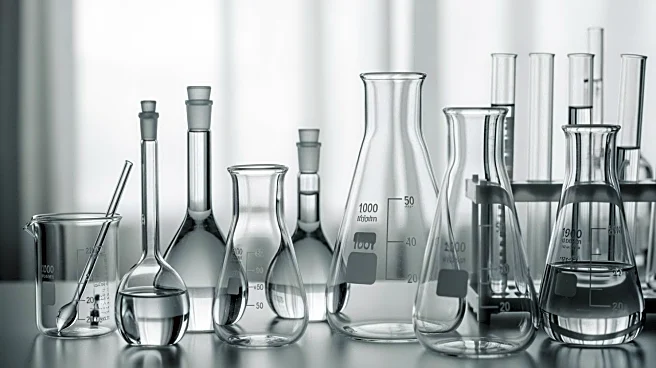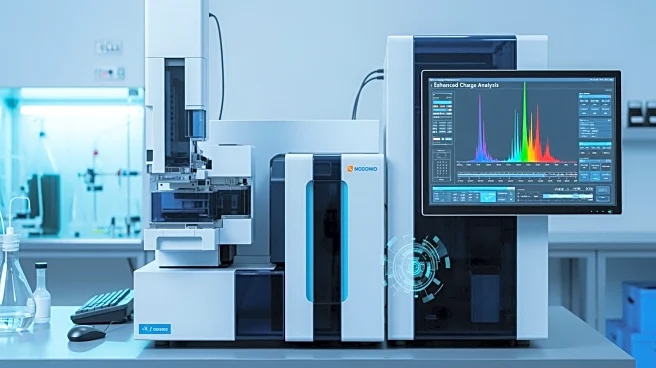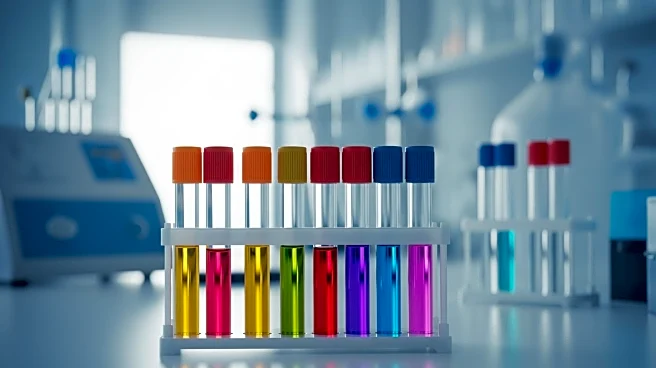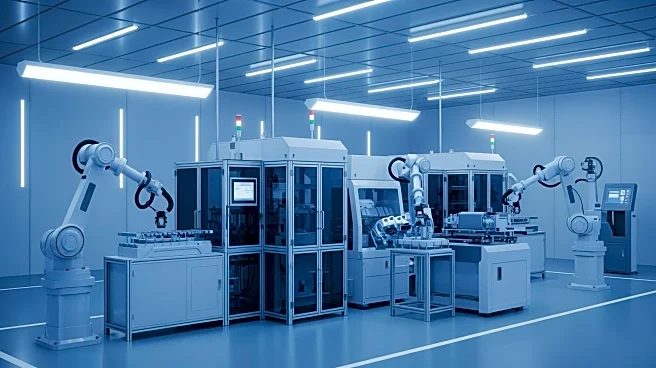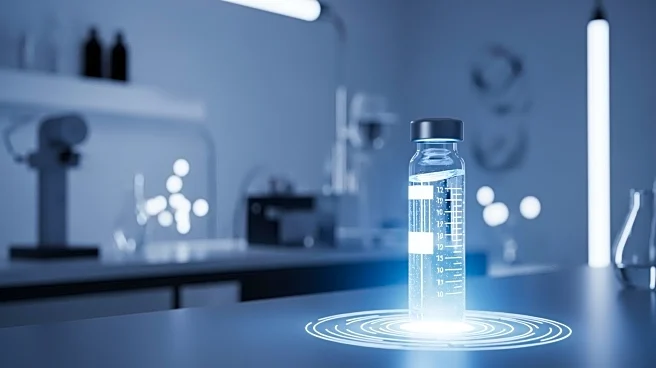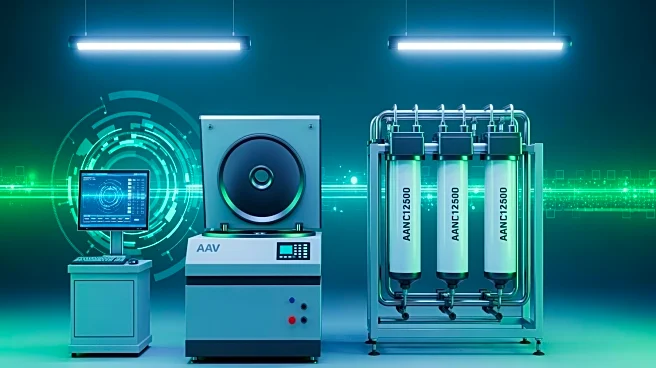What's Happening?
Researchers have introduced a harmonized and validated protocol using imaged capillary isoelectric focusing (icIEF) to assess the charge heterogeneity of monoclonal antibodies (mAbs). This new method aligns
with guidelines from the European Pharmacopoeia and the International Council for Harmonizations of Technical Requirements for Registration of Pharmaceuticals for Human Use (ICH Q2(R2)). The protocol is designed for routine quality control during manufacturing and throughout the lifecycle of mAbs, and it can also help identify counterfeit antibody drugs when reference standards are unavailable. The method focuses on the isoelectric point as a key identity parameter, enhancing the accuracy and precision of outcomes. It involves a new assortment and ratio of carrier ampholytes to improve linearity across the mAb-relevant pH gradient, allowing for better separation of antibody variants.
Why It's Important?
The development of this harmonized protocol is significant for the biopharmaceutical industry, as it sets a new benchmark for quality control of mAbs. By providing a standardized method for evaluating charge heterogeneity, manufacturers and regulatory authorities can ensure the consistency and reliability of mAb products. This is crucial for maintaining the efficacy and safety of these drugs, which are widely used in treatments for various diseases. The ability to identify counterfeit drugs also protects public health and supports the integrity of the pharmaceutical market. As demand for mAbs continues to grow, having robust analytical methods is essential for meeting regulatory standards and ensuring product quality.
What's Next?
The adoption of this protocol by manufacturers and regulatory bodies could lead to more consistent quality control practices across the industry. It may also prompt further research into optimizing analytical methods for other biopharmaceutical products. As the protocol gains acceptance, it could become a standard part of the regulatory framework for mAbs, influencing future guidelines and practices. Stakeholders in the pharmaceutical industry may need to adjust their processes to incorporate this new method, potentially leading to changes in manufacturing and quality assurance strategies.
Beyond the Headlines
The introduction of this protocol highlights the ongoing need for innovation in analytical techniques within the biopharmaceutical sector. It underscores the importance of harmonizing standards internationally to facilitate global trade and regulatory compliance. Additionally, the focus on charge heterogeneity analysis may drive advancements in related areas, such as the development of new carrier ampholytes and calibration software. This could lead to broader applications of icIEF technology in other fields of molecular biology and biochemistry.
